
AI: The Somnium Files Review
AI: The Somnium Files is the newest game by director and writer Kotaro Uchikoshi, who you might know from his work on the Zero Escape series (999, Virtue’s Last Reward, Zero Time Dilemma). Uchikoshi has always struggled to find adequate funding for his games, and thankfully he’s finally been given the budget he’s deserved to really explore the depths of his creativity. This not only feels like the culmination of his years of directing but also one of the highest budgeted games ever released by Spike Chunsoft. Fans hesitant to give this a shot if they were disappointed in Zero Time Dilemma should feel assured that he’s ironed out and polished his formula, while still finding new ways to mix things up. If you’ve never played any title from this director though don’t worry, this is completely standalone. AI isn’t perfect, but it’s the most consistent and enjoyable title I’ve seen from Uchikoshi yet and a strong contender for my Game of the Year.
The game starts with the discovery of a corpse at an abandoned theme park. She’s been stabbed multiple times, has had her left eye gouged out, and was strapped to a merry-go-round horse. The woman, Shoko Nadami, was an acquaintance of the game’s protagonist, Kaname Date. Her death has a striking resemblance to some of the victims of the Cyclops Killings that took place years ago, kicking off an investigation to stop the New Cyclops Killer before more bodies pile up.

Date was found wandering the streets six years prior to the game’s events, missing his left eye and all his memories. Since then, he’s secured a job at ABIS (Advanced Brain Investigation Squad), a classified section of the Tokyo Metropolitan Police department. ABIS’ specialty is using their revolutionary Psync Machine to dive into the dreams of suspects once leads dry up, which also serves as AI’s main gameplay mechanic. He’s also been assigned a partner, an artificial intelligence named Aiba that lives in his prosthetic left eyeball. The pair will need to work together to solve the mystery of the Cyclops killer by investigating crime scenes, interrogating suspects, and diving into dreams.
Instead of being a hybrid of visual novels and room escape puzzle games, AI is a 3D point and click adventure game. One of the biggest draws to the game is the fact that the investigation scenes integrate seamlessly with the dialogue/exposition scenes. Date’s position will always be stationary, but you have free reign to look around the environments and click anything you wish. Except for special cutscenes, the game always maintains a first-person perspective during these segments. Every single area you visit is gorgeous, varied, and packed to the brim with detail. AI’s increased budget compared to ZTD is apparent from the first location you explore, highlighting a stylish atmosphere that never lets up.

There’s an absurdly large amount of flavor text and optional character development that come from thoroughly clicking, often coming from mental conversations between Date and Aiba. Aiba being a cybernetic eye has an actual effect on gameplay, too, basically making Date a swiss army detective. She can hack internet databases, zoom in crime scenes, and gives him access to x-ray and thermal vision. This sci-fi twist to the traditional mystery game formula exists to cut back on possible tedium since Date rarely has to wait on other members of the police department for crime scene reports or other important pieces of information. In addition to examining everything around you, locations will often have people to talk to. You’re given a dialogue wheel tied to the D-Pad, letting you take the linear progression in each investigation segment at your own pace. To keep things fresh, there will be action scenes thrown in that involve quick-time events. They were all more involved than I was expecting from a point and click game, were consistently exciting and hilarious.
“Hilarious” might not be a term you would expect for me to use while describing a dark mystery game, but it's accurate in this case. It's important to understand how tonally different this is from the Zero Escape games, so you don’t go into this expecting something it isn’t. Instead of being entirely serious and haunting, Uchikoshi opted to have more of balance in his writing style. The humor in Zero Escape was only about 5% of the experience, which was fitting since those take place in claustrophobic death games. AI’s change in setting gives Uchikoshi more freedom, and he decided to use that turn both aspects of his writing style to the extreme. It can make things very over the top and silly, but this was intentional.
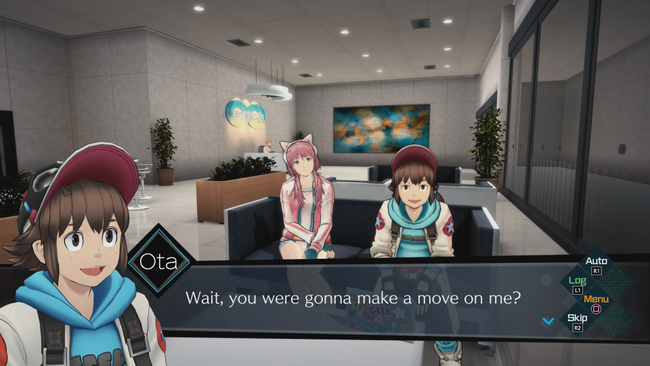
The comedy segments only made me sympathize and like the cast more, which makes the moments where these characters deal with tragedy hit even harder. Despite how silly they can be at times, I found myself to enjoy AI’s cast to the ones found in the Zero Escape series. The cast of characters all have varying degrees of flaws, yet mesh well together and have some truly wonderful development. The stakes can be incredibly high, and the story’s downtime only serves as a nice compliment. There were a couple of moments where a poorly timed joke felt out of place based on how serious the scene was supposed to be, but these were rare. I can see why some people might grow tired of Date for his tendency to tell perverted jokes, but he’s usually insulted by Aiba almost immediately after they pop up. I wasn’t sure if I would like him after discovering he fits into Uchikoshi’s “dumbass pervert with a heart of gold” stereotype, but the writing somehow made me turn around on him as the game went on.
This sense of humor also applies to the trippy dreams Date dives into, also known as Somnium. In these segments, Aiba will transform into a human version of herself to navigate the dream worlds. You control her in a third-person perspective to interact with the objects around to unlock a person’s Mental Locks. This feels like an evolution of the puzzle rooms from Zero Escape with a neat surreal twist. One big difference is that you are only given six minutes in each Somnium, with time advancing whenever Aiba moves or interacts with objects. Every object she can examine has up to four completely unique actions, and these will update the further you progress. Date and Aiba will comment and make jokes in response to everything they interact with, which is intended to subtly direct the players towards the intended path.

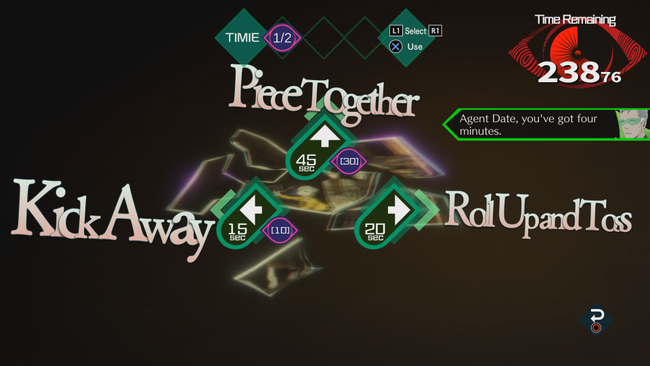
These segments don’t always follow traditional logic and will require players to think outside the box. If players find solutions to be too random and find themselves making the wrong choices too often, thankfully they can reset the dream or jump back to a previous checkpoint. Somnium is by far the most creative I’ve ever seen Uchikoshi; utilizing stunning aesthetic, amazing music, and interesting gameplay to perfectly immerse the players in the dream worlds. They create a balance of fun and tension, while also pushing the limits of his storytelling. While there are plenty of Somnium sections with only one conclusion, several can have two ways to solve them. These choices are how the story branches, as your choice will affect both Date and the subject’s perception. Once Date reaches a conclusion by solving the puzzles here, he’ll then gain access to information the person either was hiding or repressed, allowing him to make more progress on the case.
Uchikoshi has brought back the plot flowchart, allowing players to jump around to any event they’ve previously witnessed. Outside of being a great quality of life mechanic, it also works to subtly inform the player to experience everything the game has to offer. This isn’t a traditional story-driven game, where you could reach a single ending and have a complete experience. The purpose of this design choice is to use all the endings to build on your knowledge of the game’s mysteries, with each ending raising a few new questions to encourage you to explore all the branching paths. It took me around eight hours to reach my first ending, and 25 hours to reach the true ending.
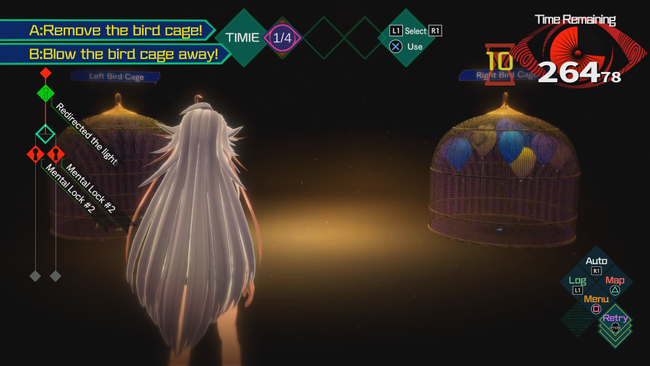
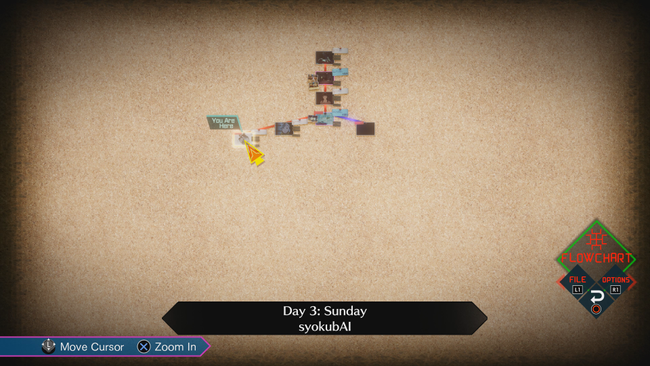
From a technical perspective, this is leaps and bounds better than Zero Time Dilemma. The 3D models look great, and while the animation isn’t anything groundbreaking, it looks good. Every character has a wide variety of expressions, with only one of Date’s “angry” expressions looking off to me. I played through the entire game on Nintendo Switch and then replayed the first few hours on PC. The PC port worked well based on what I played, but the Switch version does have a couple of issues. A few busy investigation scenes have frame rate dips, and the resolution would drop on occasion when Aiba would pull up footage from another part of the game. I imagine this was because the game has to render a completely different scene on top of the current one. There's already a patch to address this thankfully, but even the port’s pre-launch state was more than adequate for a game like this. I personally found these issues to not significantly impact my enjoyment.
The audio design is simply stunning as well, featuring the best voice acting and soundtrack I’ve heard in an Uchikoshi-written game yet. Every line of dialogue is fully voice acted, which is impressive for a game like this given that there is both an English and Japanese voice track. This might be one of the best English dubs I’ve ever heard in a game, due to both the talent of the actors and the localized dialogue flowing wonderfully.
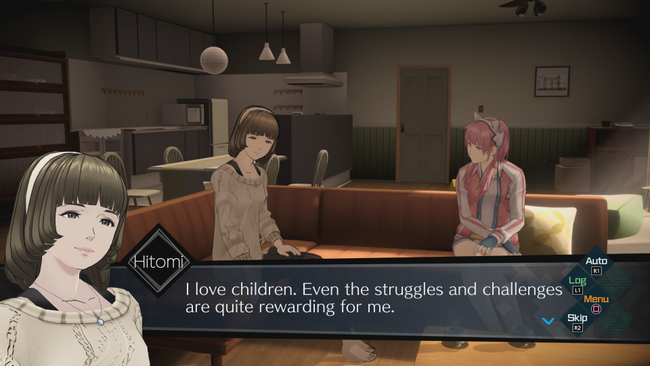
While I won’t spoil anything, I will say I was incredibly satisfied with AI’s ending. A common criticism of Uchikoshi’s writing style is his tendency to end his plotlines abruptly, and I feel like this was addressed with AI’s ending. I won’t spoil anything about it, but I personally found it to be the most fleshed-out finale I’ve seen from him. The pacing in this segment didn’t feel rushed like Zero Time Dilemma, and the game does a fantastic job tying up all the loose ends in a satisfying way. I saw the main twist coming, but it was still incredibly effective because of how it is based around established information. The numerous twists that built up to that were far less predictable, one of which possibly being the most clever twist I’ve ever seen from Uchikoshi.
On the surface, AI’s twists might seem derivative of his older works, but in my opinion, this was done with intent. The subversive nature of some of the twists feels like a nod to fans, one I appreciated. If you’re coming into AI without knowledge of his other games, then you won't notice the similarities or subversions made and will likely just be fascinated with the twists and turns the game takes. These reveals are paced impressively well, but if I were to criticize anything it would probably be that some of the exposition in the later parts of the game tends to get redundant. On the other hand, the main twist works so well because of how well it was executed. It came across as more grounded than what I’m used to with his games, and I feel like it worked to the narrative’s advantage. I was also pleasantly surprised when the main conflict wrapped up only to throw me into an hour-long epilogue, bringing the game to a definitive conclusion. It’s a tightly knit plot, that has only improved in my mind the more I’ve sat on it.
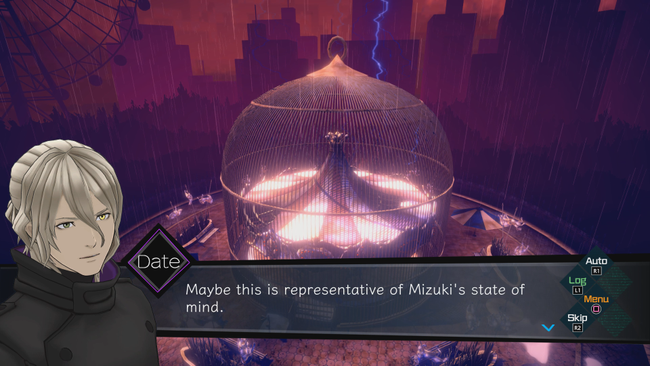
AI: The Somnium Files is a must-play for fans of detective games. It’s risky, creative, fascinating, and feels like the next step for the visual novel medium. There are plenty of valid worries I’ve seen pop up from people who felt burnt by ZTD, but I feel like all of those were addressed here. It’s far from perfect, but the flaws are incredibly minor and it still delivers the strongest narrative I’ve seen from a game all year. Fans and newcomers will find a lot to Love with AI, don’t Sleep on this game.